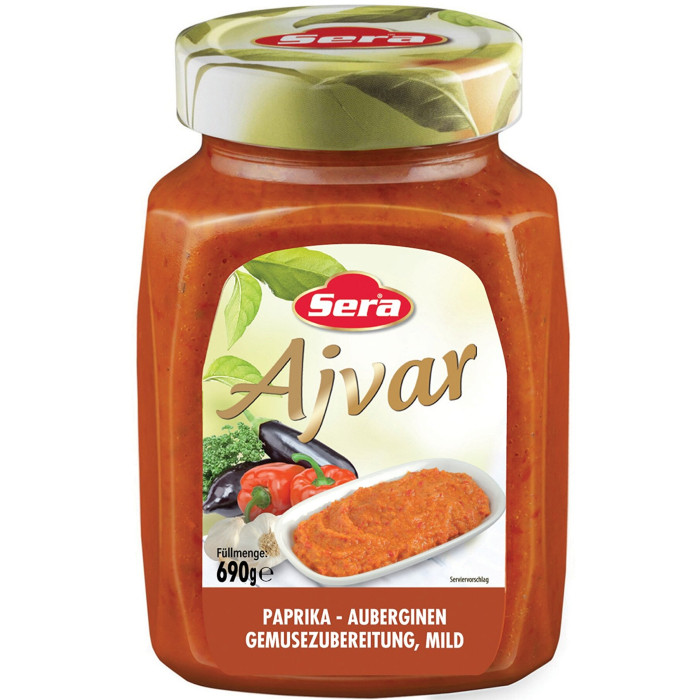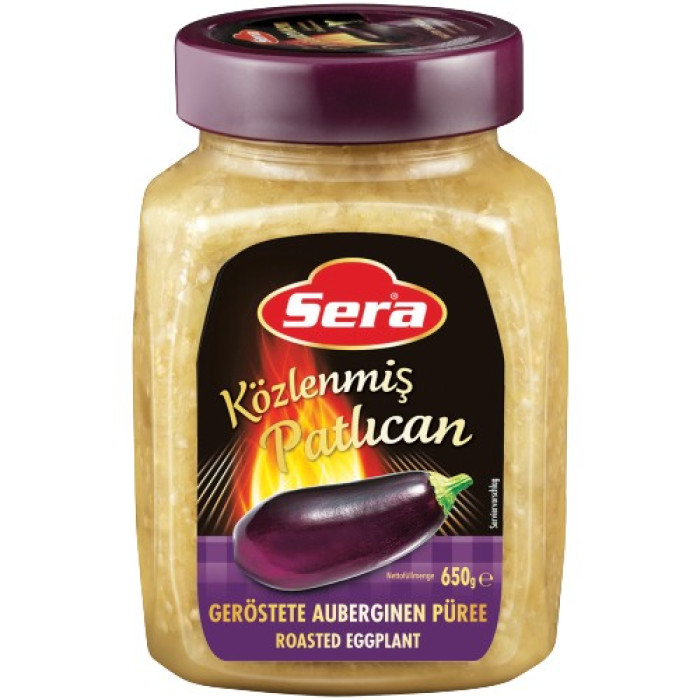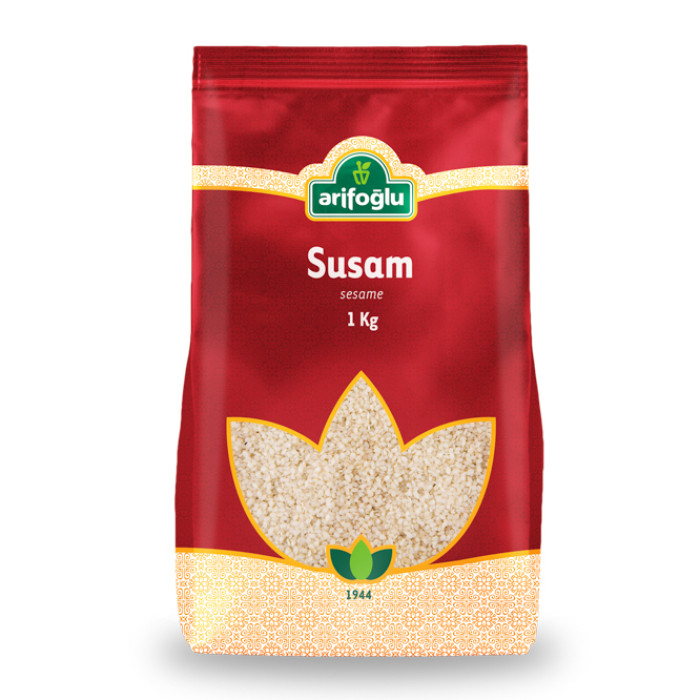Ingredients
Arifoglu Maras Crushed Red Pepper Pet Jar (175 gr 6.2oz)
Arifoglu Maras Crushed Red Pepper Pet Jar 175 gr..
$7.69
Dr. Oetker Sugared Vanillin Pack of 5 (25 gr 0.9oz)
Dr.Oetker Sugared Vanillin Pack of 5 (25 gr)..
$2.74
Dr. Oetker Whipped Cream with Cocoa (80 gr 2.8oz)
Dr. Oetker Whipped Cream with Cocoa (80 gr)..
$2.74
Arifoğlu Paprica (Ground Hot Pepper) Pet Jar (175 gr)
Arifoğlu Paprica (Ground Hot Pepper) Pet Jar (175 gr) ..
$4.99
Basak Bechamel Mix (80 gr 2.8oz)
Béchamel sauce, known as one of the main sauces of French cuisine, is made with flour, butter and mi..
$3.29
Basak Black Caraway Seeds (90gr 3.2oz)
Basak Corekot (Black Caraway Seeds) (90gr) is used in bakery products to decorate and flavor the pro..
$4.39
Basak Cig Kofte Spice (100 gr 3.5oz)
You will reach the ideal spice ratio thanks to Başak Çiğ Köfte Spice, which collects the spices that..
$3.80
Başak Cinnamon (95 gr 3.4oz)
Başak Cinnamon (95 gr) is obtained from the bark of a fragrant tree. It leaves an aromatic taste and..
$3.84
Food Produce
All About Salca;
‘What is Salca?’
Salca is used in almost
all Turkish dishes, besides; Turkish salca possesses a very popular place in
Turkish culture. The general definition of Turkish salca is the tomato or
pepper paste used to add flavor or color to the dishes. Turkish salca has shown
up the abundant and delicious ingredients produced in the summer to be consumed
in the winter months. Salca in English can be expressed as tomato paste.
Although salca in English can be expressed as tomato paste, there are
differences in taste and process. Traditional Turkish salca is made by cooking
with the warmth of the sun. Hence, here the heat source that cooks the Turkish
salca is the sun. This process makes Turkish salca own very rich taste.
Turkish salca recipe is quite simple. In the first step of the
Turkish salca recipe, the peeled tomatoes are boiled in a pan with salt. While
the heat of the sun is used to remove excess water from tomatoes in the
traditional salca recipe, it is also possible to use an oven for this process.
Red peppers can also be added to the salca recipe. In this way, a more dense
and red paste can be obtained. It is also possible to be creative when making
Turkish salca at home, besides; there are various types of Turkish salca brands
which make Turkish salca very creative way. Such as Turkish hot pepper paste.
Turkish hot pepper paste recipe contains the same steps as the Turkish salca
recipe. The only difference is that hot peppers are used instead of tomatoes.
Turkish spices biber salca are used in many Turkish dishes, moreover; Turkish
hot pepper paste makes dishes spicy and delicious. Meals are prepared by mixing
some Turkish spices biber salca into Turkish salca which made by tomatoes.
Hence, the dishes are made to be a little spicy and tastier. Turkish salca and
Turkish spices biber salca products can be stored in glass jars or canned for a
long time. Thus, in this way, Turkish salca can be used in meals at any time.
All About Leblebi;
‘How Many Calories in Leblebi?’, ‘How to Make Leblebi at Home?’,
and ‘Where to Find Leblebi by Area’
Turkish leblebi in
English is roasted chickpeas, which is consumed gladly in Turkey. After the
chickpeas are roasted in a special oven, they are heated and take the shape of
leblebi. It is possible to call leblebi as a Turkish chickpeas. Turkish
chickpeas include lower calories. There are about 30 calories in a handful of
Turkish chickpeas. Turkish chickpeas are consumed as a snack, eliminating
hunger and the need for bread consumption. Therefore, Turkish chickpeas is a
food item that can be preferred by those who desire to lose weight. It is also
very easy to make Turkish chickpeas at home. It is possible to make Turkish
chickpeas at home by cooking the boiled chickpeas in the oven with the desired
spices. It is also eligible to find Turkish chickpeas in the area for those who
do not desire to make Turkish chickpeas at home. If Turkish chickpeas can not
be found in local stores, Turkish leblebi can be purchased in online Turkish
markets.
All About Turkish Pistachio Nuts;
Pistachio can be produced
in many parts of the world if suitable conditions are provided. Turkey is among
the countries that producing pistachios. Moreover, there are 12 varieties of
Turkish pistachios. These Turkish pistachios are classified according to
features such as size and fat ratio. Best rated Turkish pistachio is the
Turkish pistachio grown in Gaziantep, Turkey. This is the reason why Turkish
pistachio is called ‘antep fıstığı’ in Turkish. Furthermore, many delicious desserts
such as baklava and katmer are prepared with Turkish pistachio nuts.
As an example of Turkish
pistachio dessert recipes, preparing Turkish pistachio sweet balls is a very
simple and healthy alternative. This Turkish pistachio dessert recipe includes 3
ingredients which are Turkish pistachio, lemon juice, and dry persimmon. After
all these materials are shredded by using a blender, they are given a round
shape by hand. For the final step, the prepared sweet Turkish pistachio balls
are covered with crushed Turkish pistachios. This Turkish pistachio dessert
recipe is both healthy and delicious. Another simple Turkish pistachio dessert
recipe is Turkish pistachio cake. Furthermore, no extra ingredients are needed
to make a Turkish pistachio cake. It is possible to try the taste of Turkish
pistachio cake by adding a teacup of crushed Turkish pistachios to the classic
cake recipe. Turkish pistachios for sale can be found in local Turkish markets
and online Turkish markets. Besides, Turkish pistachios for sale are available
in online Turkish stores in different sizes and forms. Consequently, Turkish
pistachios for sale can be purchased from online Turkish markets to use in both
meals and desserts.
All About Turkish Chestnut, Turkish Almond, Turkish Dried Apricot,
and Turkish Hazelnut;
‘What is Kestane’, ‘What does Badem Mean?’
The meaning of kestane in
English is chestnut. Turkish chestnuts are consumed both roasted and in the
form of a sweet dessert way in Turkey. Kestane candy (candied chestnut) is made
by soaking roasted chestnuts in sweet syrup. Kestane candy is very popular in
Turkey, moreover; candied chestnut is a very delicious dessert. Another famous
nut is the Turkish dried apricot. Turkish dried apricot beautifies the skin and
strengthens the immune system with the antioxidant effect of Turkish dried
apricot. Another great health benefit is that Turkish dried apricot relaxes the
digestive system. Besides, Turkish dried apricot is a very tasty nut with all
these health benefits. Another beneficial nut is badem. The meaning of badem in
English is almond. Turkish almonds are divided into bitter and sweet. Bitter
Turkish almond is used to obtain almond oil. Furthermore, sweet Turkish almonds
are consumed raw or roasted way. Almond milk, a by-product of almonds, is a
very tasty and nutritious alternative.
The final nut is Turkish
hazelnut. Turkish hazelnut trees provide 65% of the world's hazelnut
production. The factor that enables Turkish hazelnut trees to produce healthy
and high-quality products is the fact that the Black Sea region in Turkey
provides the conditions for hazelnut growing perfectly. Turkish hazelnut has
many health benefits. For example, Turkish hazelnut is a source of energy and
relieves physical fatigue. Moreover, Turkish hazelnut lowers cholesterol and is
very beneficial for heart health. The most important quality is that Turkish
hazelnut is good for anemia. Therefore, Turkish hazelnut has many health
benefits as well as being a good snack with its delicious taste.

































